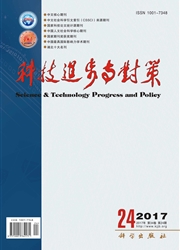

 中文摘要:
中文摘要:
首先对中国技术创新水平进行了跨国跨期比较分析,并探寻了中国技术创新水平现状以及与美国的技术差距;其次,构建了理论模型,从长期和短期视角剖析了后发国家的技术追赶机制,进而对中美技术差距的影响因素进行了计量分析。研究表明:1在技术追赶过程中,短期内,后发国家应积极发挥后发优势,根据自身技术水平权衡模仿创新和自主创新,而在长期,随着技术差距逐渐收敛于稳定值,后发国家应加强自主创新;2相对于美国,尽管中国技术水平仍较滞后,但中美技术差距呈缩小态势;3当前,自主创新、FDI的溢出吸收以及劳动力资本和生产性投资有助于缩小中美技术差距,但高科技产品进口却导致了技术差距的扩大;4随着"刘易斯拐点"的到来和中国工业化进程的深入,劳动力、资本等传统要素对缩小中美技术差距的作用正在逐渐减弱。
 英文摘要:
英文摘要:
Firstly,this paper explores the status quo of Chinese technological innovation and its gap with the United States.Secondly,it constructs a theoretical model to dissect technological catching-up mechanism from the perspective of longterm and short-term.Furthermore,it empirically analyzes the influence factors of the technological gap between China and the United States.It shows that in the process of technological development,developing countries shall be good to play the advantage,appropriately adjust the way of technological progress according to the technical level in the short term,in the long term,and with the gap gradually converge to a stable value,China should strengthen independent innovation.China's technology level is lagging behind,but the technology gap between China and the United States becomes smaller.Innovation,FDI spillover,labor and investment are the key factors to reduce the technology gap.However,Chinese high-tech imports accelerate the expansion of technology gap.Their function is fading with the arrival of the " Lewis inflection point" and the recession of our comparative advantage.
 同期刊论文项目
同期刊论文项目
 同项目期刊论文
同项目期刊论文
 期刊信息
期刊信息
